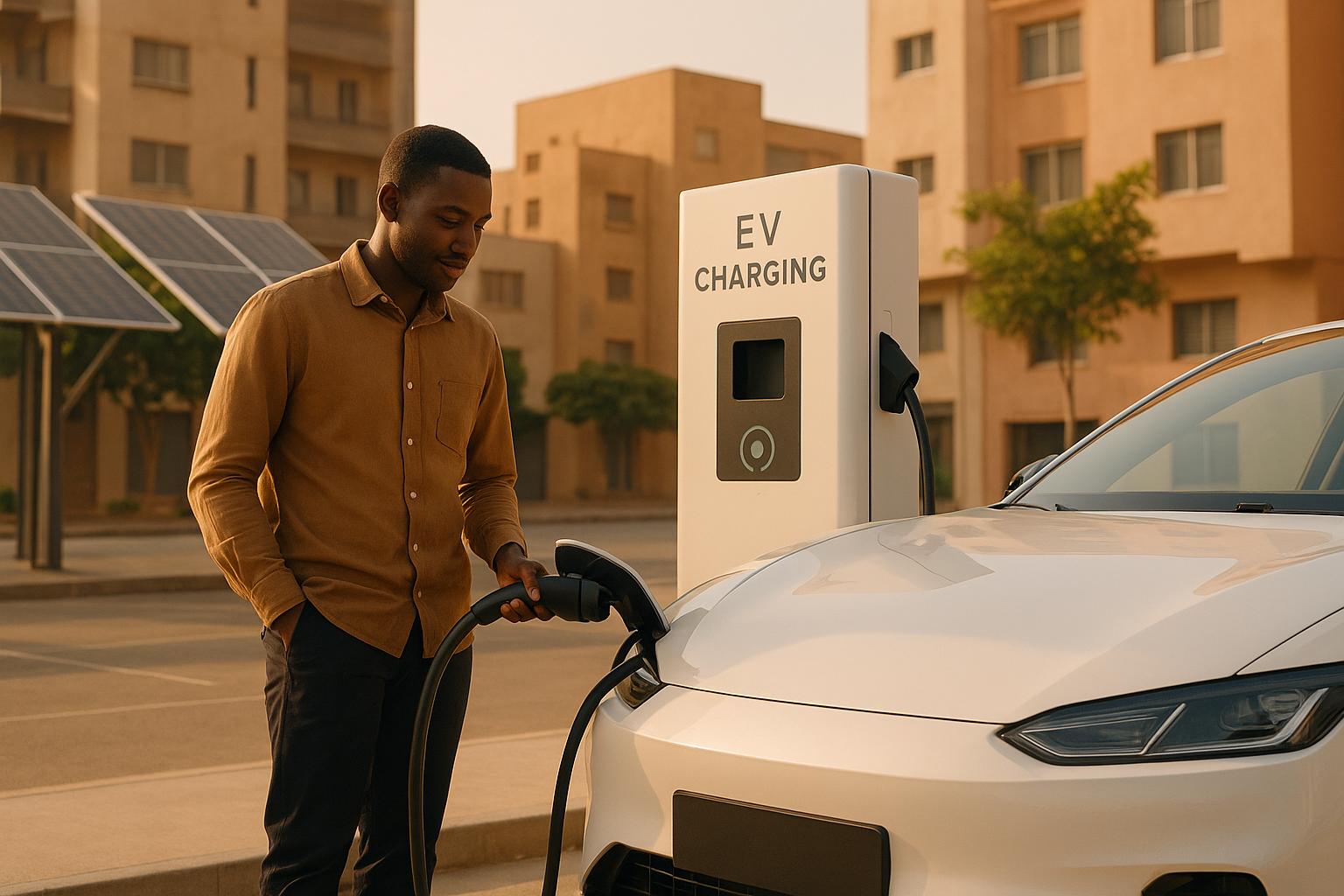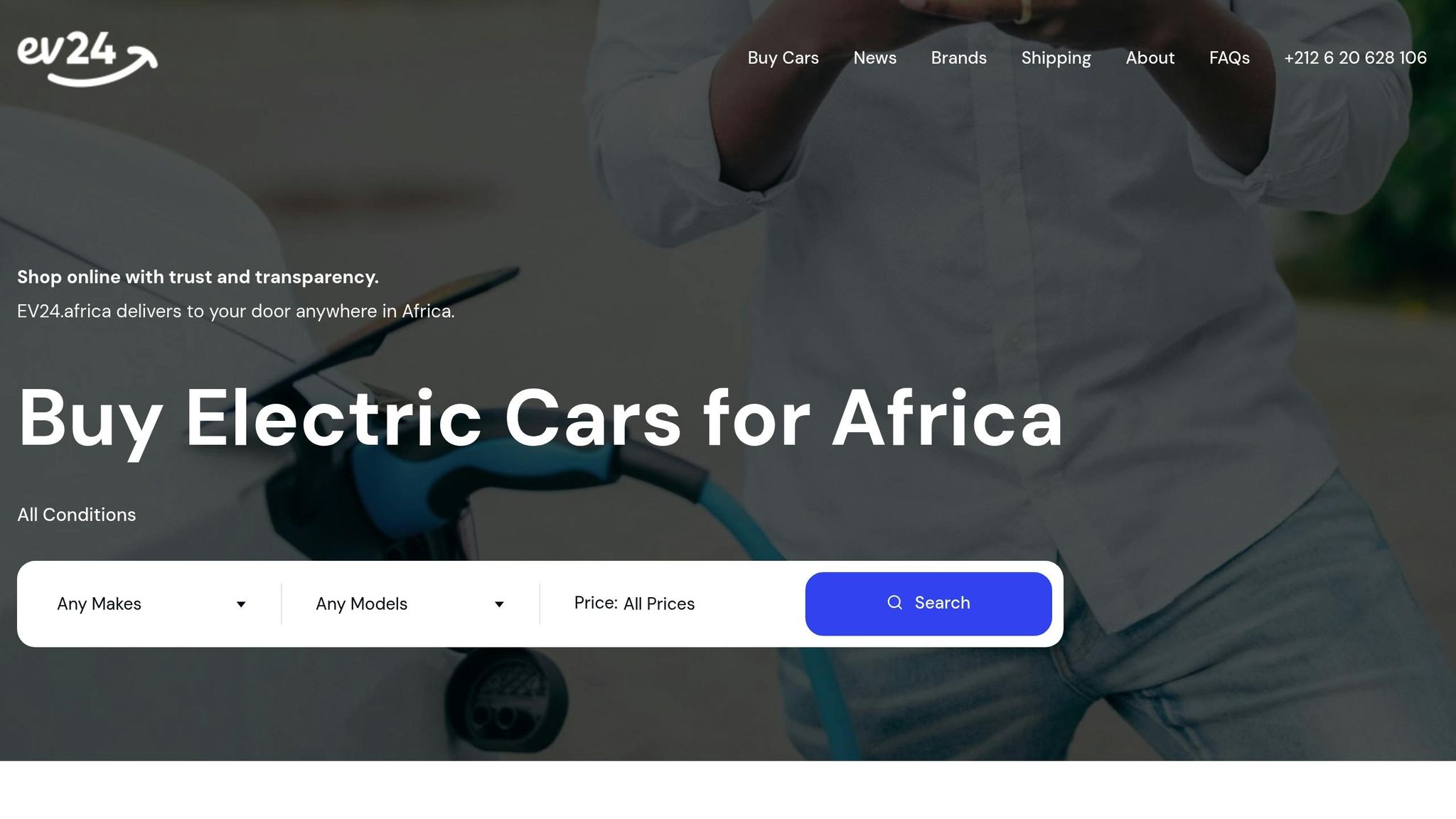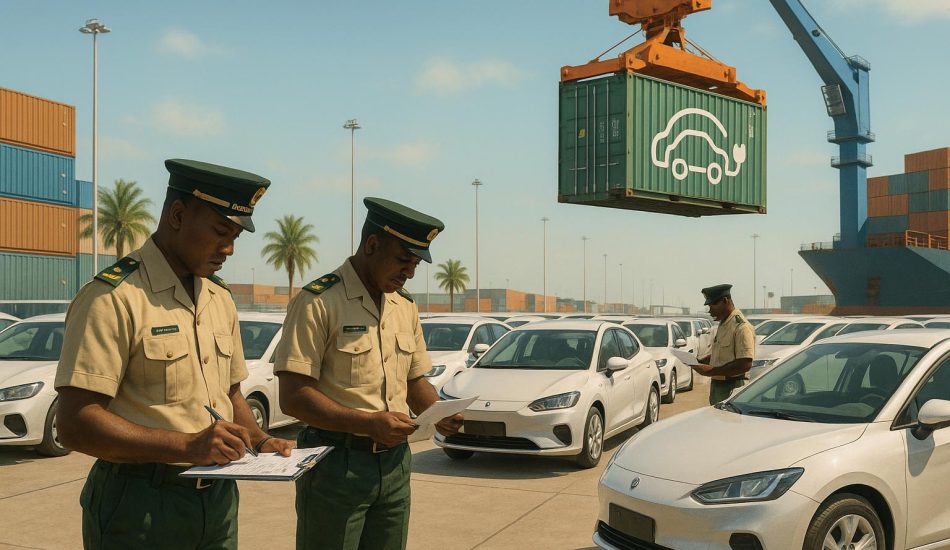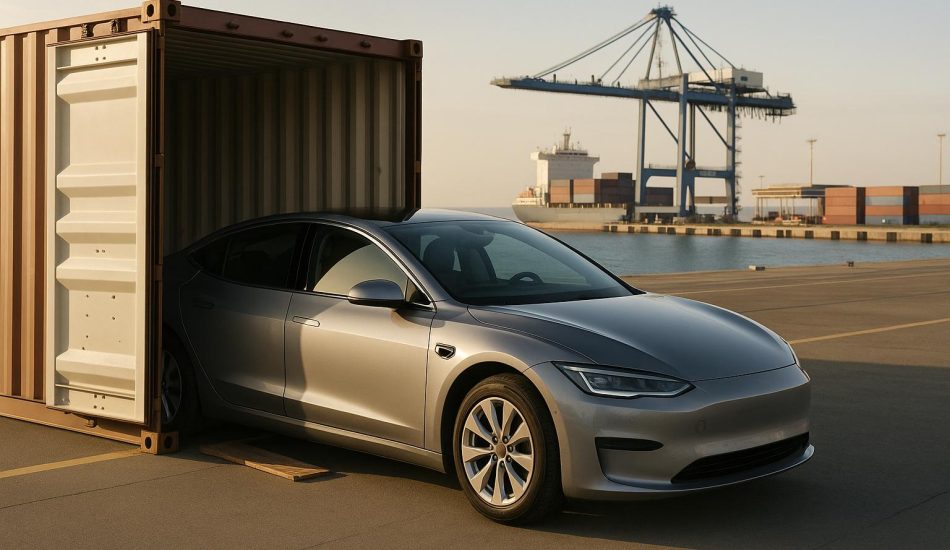
Electric vehicles (EVs) are gaining momentum in Africa, but challenges like high prices, limited charging infrastructure, and import taxes slow progress. Governments are stepping in with tax breaks, local manufacturing incentives, and charging network investments to make EVs more affordable and accessible. These policies aim to reduce fuel reliance, cut pollution, and create jobs, while also addressing affordability through subsidies, financing options, and renewable energy-powered charging stations. However, issues like unreliable electricity, income gaps, and inconsistent enforcement hinder widespread adoption. By focusing on renewable energy, local production, and financing solutions, governments are working to overcome these barriers and accelerate EV adoption across the continent.
Africa’s EV Revolution & Urban Mobility Solutions | Anazi Zote-Piper
Main Policies Driving EV Adoption in Africa
To tackle the challenges hindering electric vehicle (EV) adoption, African governments are rolling out initiatives aimed at making EVs more accessible and affordable. Here’s a closer look at the policies shaping the continent’s transition to electric mobility.
Tax Incentives and Financial Support
Many African nations are addressing the high upfront cost of EVs by offering reduced import duties, tax exemptions, and direct financial incentives. These measures aim to make EVs more affordable for consumers, encouraging a shift toward cleaner and more sustainable transportation.
Promoting Local Manufacturing and Assembly
Several countries are focusing on bolstering local EV production. By offering benefits such as tax holidays, production rebates, and establishing special economic zones, governments are creating an environment that supports local assembly. This not only reduces dependency on imports but also stimulates job creation and economic growth.
Investment in Charging Infrastructure
To alleviate concerns about range and accessibility, governments are heavily investing in charging infrastructure. By partnering with utilities and private investors, they are expanding public charging networks in key urban centers and along major transit routes. This growing infrastructure plays a crucial role in building consumer confidence and encouraging EV adoption.
How Policies Affect EV Access and Market Growth
The policy initiatives mentioned earlier are driving tangible changes across Africa’s electric vehicle (EV) markets. These government efforts are dismantling long-standing barriers while reshaping how consumers perceive EVs, ultimately transforming the market landscape and influencing behavior.
Better Access and Lower Costs
In addition to investing in infrastructure, governments are addressing affordability and financing challenges to make EVs more accessible. Financial incentives, such as tax exemptions and reduced import duties, are helping lower vehicle prices, making EVs a viable option for middle-income households.
Government-backed EV loans are another key measure, offering competitive rates and flexible payment plans to ease the burden of higher upfront costs. These financing options are especially critical in making EV ownership manageable for more consumers.
Subsidies and rebate programs have also shown success, particularly in urban settings where EV adoption is more feasible. Many of these programs focus on specific vehicle categories, like electric motorcycles for delivery services or electric buses for public transit. These targeted initiatives not only encourage adoption but also provide real-world examples of EVs’ practicality and reliability.
By addressing affordability, these policies are paving the way for broader shifts in market dynamics, which are explored further below.
Market Growth and Consumer Changes
The affordability measures introduced through government policies are directly fueling EV adoption across the continent. Investments in charging infrastructure and financial support are reinforcing consumer confidence in the technology’s sustainability and reliability.
As charging stations become more prevalent along highways and in urban centers, potential buyers feel more assured about making the switch to EVs. This growing infrastructure is critical in reducing "range anxiety" and encouraging widespread adoption.
Another key factor is the "demonstration effect." When government fleets incorporate EVs or public transit systems transition to electric buses, it provides everyday exposure to the technology. This visibility helps normalize EVs and showcases their effectiveness under local conditions.
Countries that combine financial incentives with significant investments in infrastructure seem to be achieving faster and more widespread adoption. These coordinated efforts not only amplify the impact of individual policies but also suggest that a holistic approach can accelerate market growth.
Policy Benefits and Drawbacks Table
| Policy Type | Benefits | Drawbacks |
|---|---|---|
| Tax Incentives & Import Duty Reductions | Lowers vehicle costs; Expands access; Quick to implement | Reduces government revenue; May primarily benefit wealthier buyers; Could distort the market |
| Infrastructure Investment | Alleviates range anxiety; Creates jobs; Develops a sustainable EV ecosystem | Requires significant upfront investment; Needs ongoing maintenance; May initially outpace adoption |
| Local Manufacturing Support | Boosts job creation; Reduces reliance on imports; Cuts long-term expenses | Demands large investments; Requires skill development; May limit vehicle options initially |
| Direct Subsidies & Rebates | Provides targeted support; Encourages measurable adoption; Can be tailored to needs | Constrained by budgets; Complex to administer; Risk of misuse or fraud |
| Government Fleet Procurement | Demonstrates EV reliability; Achieves cost savings through bulk purchases; Builds maintenance expertise | Limited impact on private consumers; Requires large budgets; Potential delays in procurement |
Problems with EV Policy Implementation
Even with promising policies in place, several challenges continue to hinder the widespread adoption of electric vehicles (EVs) across Africa. These obstacles highlight the disconnect between policy goals and the realities on the ground.
Infrastructure Problems and Power Access
One of the biggest hurdles is the lack of reliable electricity, which is essential for EV charging networks. In rural areas, inconsistent power supply makes it difficult to develop and maintain charging stations. On top of that, frequent power disruptions drive up the cost of maintaining this infrastructure. These issues only add to the financial strain for potential EV buyers.
Cost Barriers and Income Gaps
Affordability remains a significant barrier. Electric vehicles still come with higher upfront prices compared to gasoline-powered cars. For many, especially in rural areas and lower-income households, financing options are limited, making it hard to make the switch – even though EVs can offer savings in the long run.
Policy Enforcement and Public Education
Inconsistent implementation of policies across different government levels also poses a challenge. Delays in processing incentives create frustration and erode public confidence in EV programs. Meanwhile, a lack of public awareness and outreach leads to misconceptions about EVs, further slowing adoption. To make matters worse, many service providers lack the technical knowledge needed to support the transition. Tackling these issues will be crucial to realizing the potential of EVs in Africa.
sbb-itb-99e19e3
Future Plans: Improving EV Adoption Through Better Policies
African governments are rolling out strategies focused on sustainable infrastructure, local production, and accessible financing to drive the adoption of electric vehicles (EVs).
Expanding Renewable-Powered Charging Networks
To address current challenges and embrace forward-thinking energy solutions, policymakers are prioritizing the integration of renewable energy into EV charging infrastructure. Solar and wind power are becoming the go-to choices for powering charging stations, reducing reliance on fossil fuels and enhancing the sustainability of electric mobility across Africa.
In many regions, new policies are being introduced to support renewable energy in charging projects. These include tax breaks and lower import duties on renewable energy equipment, making it more appealing for investors to develop solar-powered charging stations. The goal is to ensure that EVs not only reduce emissions but also align with broader environmental goals.
In areas where the power grid is less reliable, governments are exploring community-based charging solutions. By offering grants and technical support to local entrepreneurs, they aim to extend charging networks beyond urban hubs, ensuring that rural areas are not left behind in the EV transition.
Boosting Local Manufacturing and Financing Options
In addition to renewable energy initiatives, governments are focusing on strengthening domestic EV production and improving financing options to make EVs more accessible.
Policies under consideration include enhanced incentives to encourage local assembly, which could create jobs and foster technical expertise in EV production. Governments are also exploring innovative financing models, such as government-backed loans, flexible payment plans, and battery leasing programs. These measures aim to lower the upfront costs of EV ownership, addressing one of the main barriers for consumers.
Technical training programs for EV maintenance and repair are also in the works, ensuring that local expertise is developed to support the growing EV market. These steps are designed to build a robust ecosystem for EV adoption while making ownership more affordable and practical for the average consumer.
Opportunities for Platforms like EV24.africa

As policies evolve, platforms like EV24.africa are uniquely positioned to bridge the gap between government incentives and consumer needs. By providing clear pricing information, EV24.africa can help buyers understand how tax breaks and subsidies affect the final cost of their vehicles. With delivery services spanning 54 African countries, the platform can play a key role in improving EV accessibility across the continent.
Strengthening partnerships with governments could also allow EV24.africa to streamline access to loan programs for EV purchases. Additionally, as local assembly efforts grow, the platform’s wide range of electric vehicles ensures competitive pricing and quality options for consumers. By expanding its services to include maintenance training and repair support, EV24.africa can help address service-related challenges, boosting consumer confidence and paving the way for wider EV adoption.
Conclusion: Building Africa’s Electric Vehicle Future
Across Africa, government policies are reshaping the electric vehicle (EV) landscape. From tax breaks to infrastructure investments and support for local manufacturing, these initiatives are addressing the hurdles that have traditionally slowed EV adoption.
The financial effects of these policies are becoming clear. Tax incentives and affordability measures are opening up the market to more consumers, while investments in charging networks are making EVs a practical choice for everyday use. However, keeping this momentum alive will require tackling ongoing challenges.
The long-term growth of Africa’s EV market hinges on consistent policy efforts and the ability to address issues like rural electrification, income disparities, and the lack of technical expertise. Countries that remain committed to clear, adaptable policies tailored to their unique markets will be better positioned to make real progress.
One promising avenue is the integration of renewable energy into EV infrastructure. By focusing on solar and wind-powered charging stations, African nations have the chance to bypass traditional automotive systems and create a more sustainable transportation network.
Digital platforms such as EV24.africa are also stepping up to bridge the gap between policy and consumer access. With services spanning all 54 African countries and tools that provide transparent pricing, these platforms make it easier for buyers to explore their options and adopt EV technology, aligning with government objectives.
Africa’s EV journey is well underway. Its success will depend on ongoing collaboration among governments, private companies, and consumers to ensure that supportive policies translate into widespread and sustainable adoption across the continent.
FAQs
What challenges do African countries face with electric vehicle adoption, and how are governments addressing them?
African countries face a range of hurdles when it comes to embracing electric vehicles (EVs). High upfront costs, a shortage of charging infrastructure, and a reliance on fossil fuels for electricity generation are some of the key obstacles. These challenges make EVs harder to access for the general population, slowing down their adoption across the continent.
To tackle these barriers, governments are rolling out initiatives like tax incentives, purchase subsidies, and investments in infrastructure to make EVs more appealing and practical. For example, Rwanda is taking steps to phase out petrol-powered motorbikes in Kigali, replacing them with electric alternatives. Meanwhile, Kenya has ambitious plans to set up 1,000 EV charging stations by 2027. These measures aim to reduce costs, expand charging options, and steer transportation toward a cleaner, more sustainable future.
How are government policies in Africa making electric vehicles more affordable and accessible?
How Government Policies Are Boosting EV Adoption in Africa
Across Africa, governments are stepping up to make electric vehicles (EVs) more affordable and accessible to the public. Countries like Rwanda, Kenya, and South Africa are rolling out tax incentives that include reduced import duties, VAT exemptions, and even tax deductions of up to 150% for investments tied to EVs. These measures are a game-changer, significantly cutting the upfront costs for buyers and making EVs a more practical option.
But it’s not just about tax breaks. Governments are also putting resources into local manufacturing and building out charging infrastructure. By supporting local production and ensuring that EV owners have access to reliable charging points, they’re tackling long-term costs and convenience issues head-on. These initiatives are helping to create a thriving EV market, setting the stage for cleaner and more efficient transportation across the continent.
How are renewable energy sources being used to power electric vehicle charging stations in Africa?
Renewable Energy Driving EV Charging in Africa
Across Africa, renewable energy is becoming a cornerstone for powering electric vehicle (EV) charging networks. Countries like Ethiopia are tapping into their plentiful natural resources – hydropower, in Ethiopia‘s case – to fuel EV charging stations while easing reliance on traditional energy grids. In regions where grid access is limited, solar-powered charging stations are stepping in, offering a more sustainable and practical alternative.
In South Africa, plans are in motion to set up off-grid charging stations along key travel routes. These stations aim to make EV adoption possible even in remote areas. By embracing renewable energy, Africa is not just supporting cleaner transportation but also laying the groundwork for a future shaped by electric mobility.



